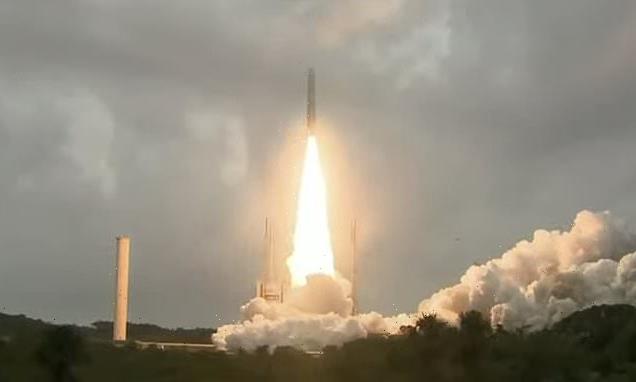Nasa prepares the James Webb Space Telescope for launch
We use your sign-up to provide content in ways you’ve consented to and to improve our understanding of you. This may include adverts from us and 3rd parties based on our understanding. You can unsubscribe at any time. More info
Three decades in the making, the $10billion (£7.5billion) probe blasted off in spectacular fashion on an Ariane rocket from French Guiana. NASA scientists now face “two weeks of terror” as they cross their fingers and hope everything goes to plan. This is because the James Webb telescope is far bigger than any payload any rocket has ever launched.
James Webb has been designed to detect the light of the youngest stars in the Universe using its gilded, 21ft-wide (6.5metre) mirror.
NASA had to work around this problem by turning the telescope into the world’s most intricate and expensive piece of origami.
The telescope will launch folded inside of the Ariane 5’s payload fairing, after which it will go through an unforgiving unfurling procedure.
Once unfurled, Dr Megan Argo, VP of the Royal Astronomical Society, told Express.co.uk it will be about as big as a tennis court.


Webb’s goal will be to try to show the very first stars and galaxies to shine in the Universe.
It will also have the power to probe the atmospheres of distant planets to look for gases that might hint at the presence of life.
NASA administrator Bill Nelson told the BBC: “Webb is an extraordinary mission.
“It’s a shining example of what we can accomplish when we dream big. We’ve always known that this project would be a risky endeavour. But, of course, when you want a big reward, you have to usually take a big risk.”
The incredible piece of technology gets its name after one of the legends of the Apollo missions.

It will replace the Hubble Hubble Space Telescope, which, after 31 years in orbit, is nearing the end of operations.
At the heart of its capabilities is its 6.5metre-wide golden mirror.
It will work alongside four super-sensitive instruments, should enable Webb to detect the light from the earliest stars.
NASA senior project scientist John Mather added: “They will be just little red specks.


“We think there should be stars, or galaxies, or black holes maybe beginning at 100 million years after the Big Bang. There won’t be many of them to find at that time but the Webb telescope can see them if they’re there, and we’re lucky.”
The JWST has been in the works ever since the launch of Hubble in April 1990 and was originally intended to be built and ready to fly as early as 2007.
The project has suffered many delays over the years, including a recent decision to push the launch date to Christmas Day.
Source: Read Full Article


